
Despite the change in season, autumn is really the high-point for a lot of summer-flowering perennials, with prairie plants and late-season grasses really hitting their stride. Combining them is up to your personal tastes, but we can offer some simple advice if you find the process intimidating.
Structure, rhythm, repetition.
People have often heard that you plant in 3s and 5s – which is good advice – but a rule is worthless without a convincing justification, and fortunately this has one. So why?
The significance of odd numbers is to discourage uniform planting. Often people will have a long strip of bed between a lawn and a wall and you want to avoid the finished product looking the poster from The Usual Suspects. The trick with long borders is to draw your eye across them in a natural way and a simple way to do this is to pick say 3-4 different plants and repeat them at intervals. In this case your 3 of the same plant are well spread out across the border with the others in between. The repetition needn’t be uniform, and indeed it’s best if things aren’t perfectly symmetrical. Another approach is to cluster your 3 plants together in a small triangle. This is an important strategy in a narrow bed whether it’s 3 of the same plant or 3 different ones. To whatever extent you can, stagger plants front to back (∴). This will create depth and is key to avoiding the line-up look.
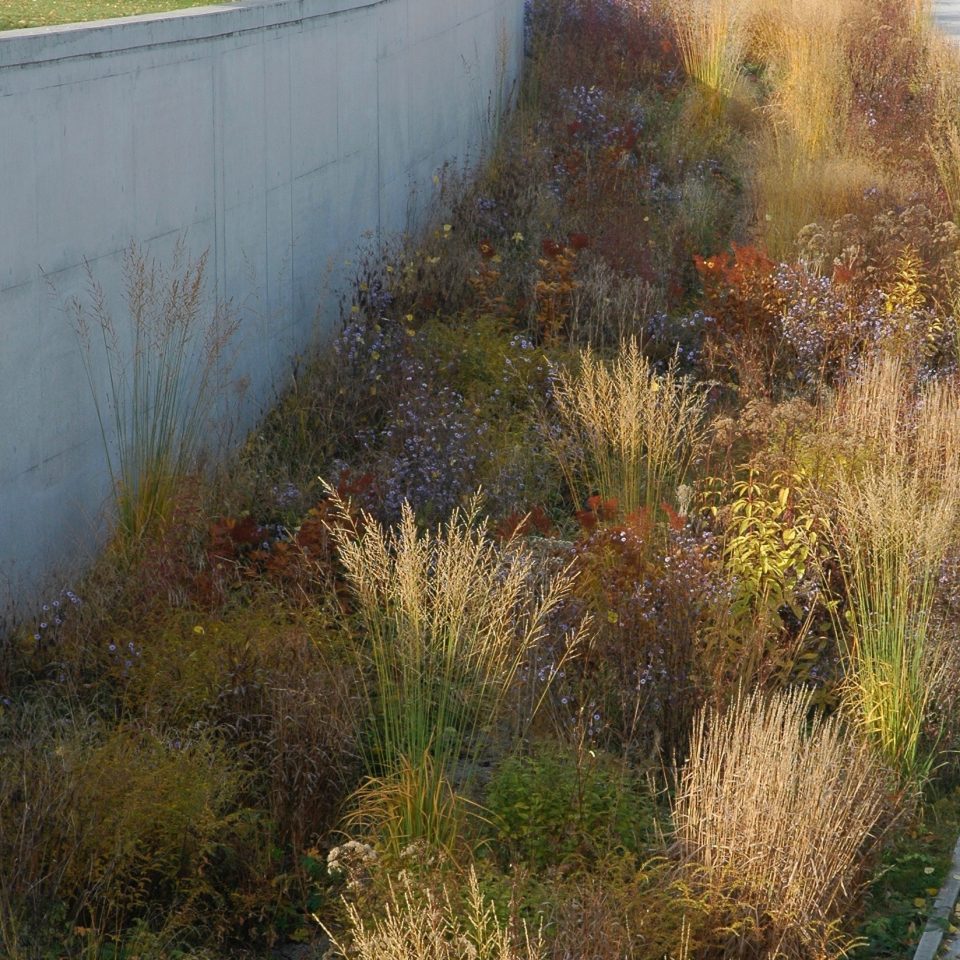
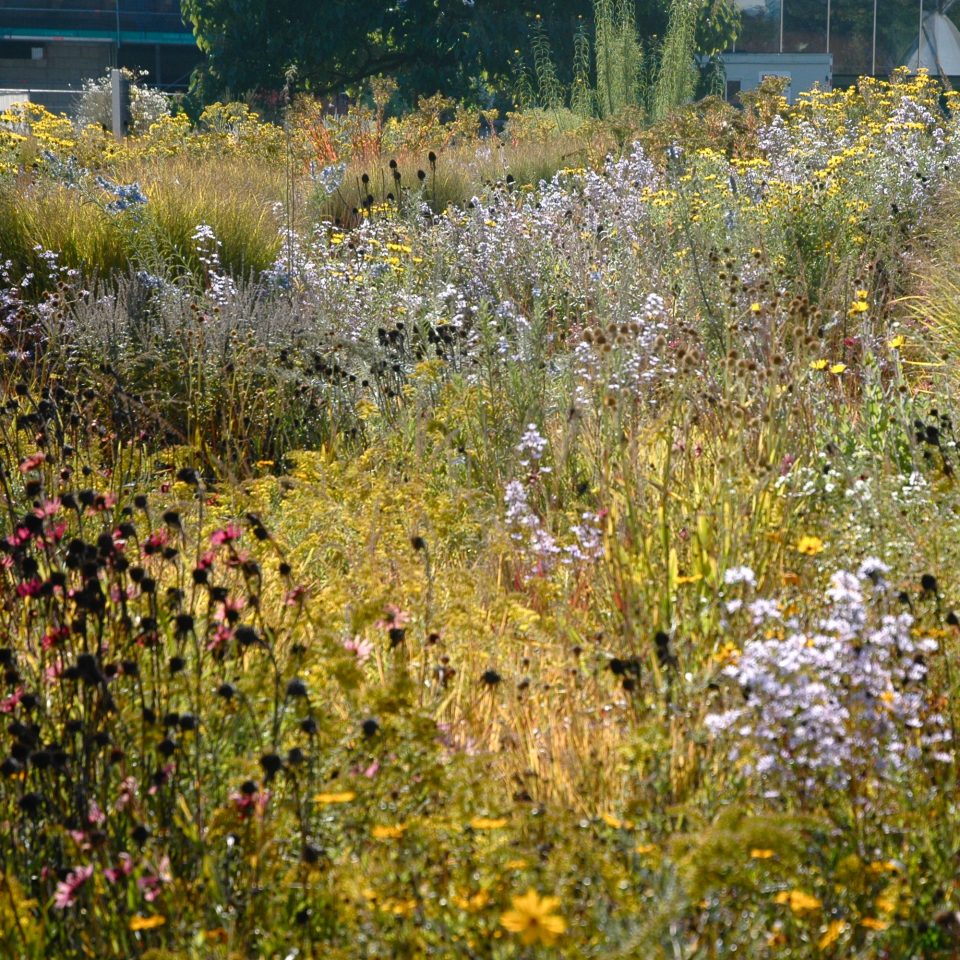
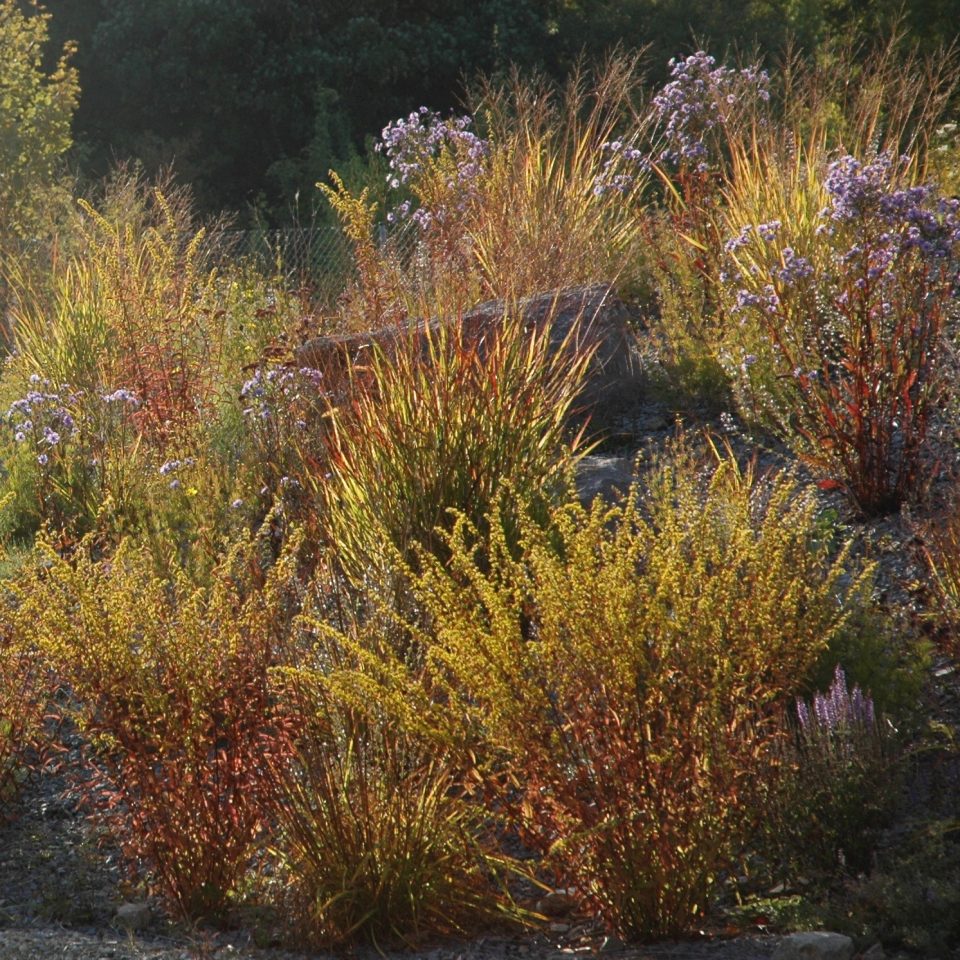
It is at this interval where we note that 3 and 5 themselves are irrelevant, so long as you take the point that uniformity will be obvious to the eye (which can be intentional and appropriate to some circumstances) and planting more than one of something helps to make it feel like a more natural space. When you look across a meadow, you might for example see ragwort dotted through the grass. This is just two plants over a huge area yet their apparent random repetition makes the space feel unified and natural. Your eye follows the yellow and hops playfully from clump to clump. This is the effect we’re trying to achieve, and it applies just the same in a large space or a confined one, in sun or shade.
So how about some combinations?
Autumn is a transitory time with some summer perennials fading out and others just beginning (Asters, grasses). The combination of both works very well. Don’t be afraid at this time of year to mix spent flowers with new ones. September and October are languid months of evenings with beautiful angled light and the residual heat of summer just fading away. Not everything should look perfectly fresh. A little dilapidation goes a long way.
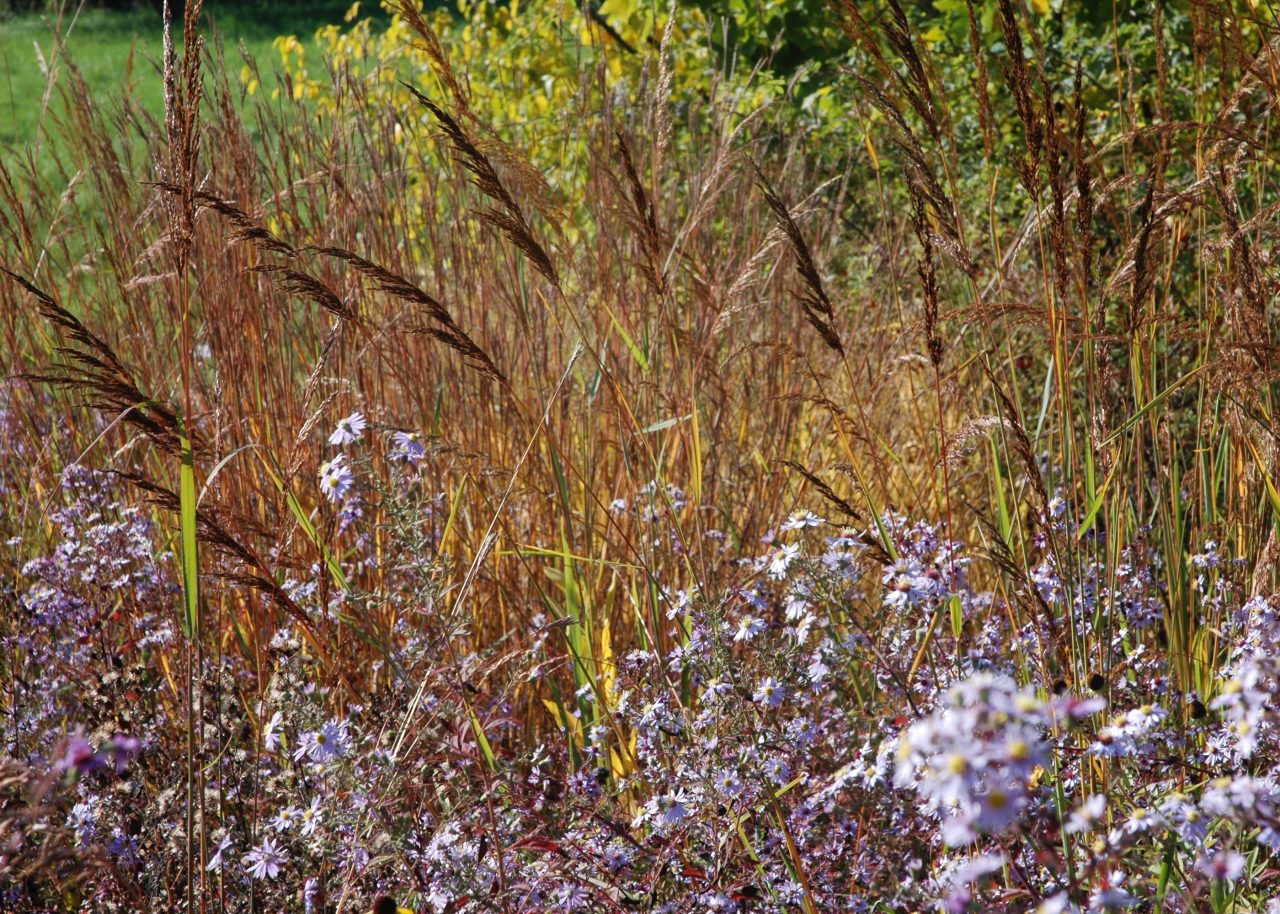
Aster with Grasses
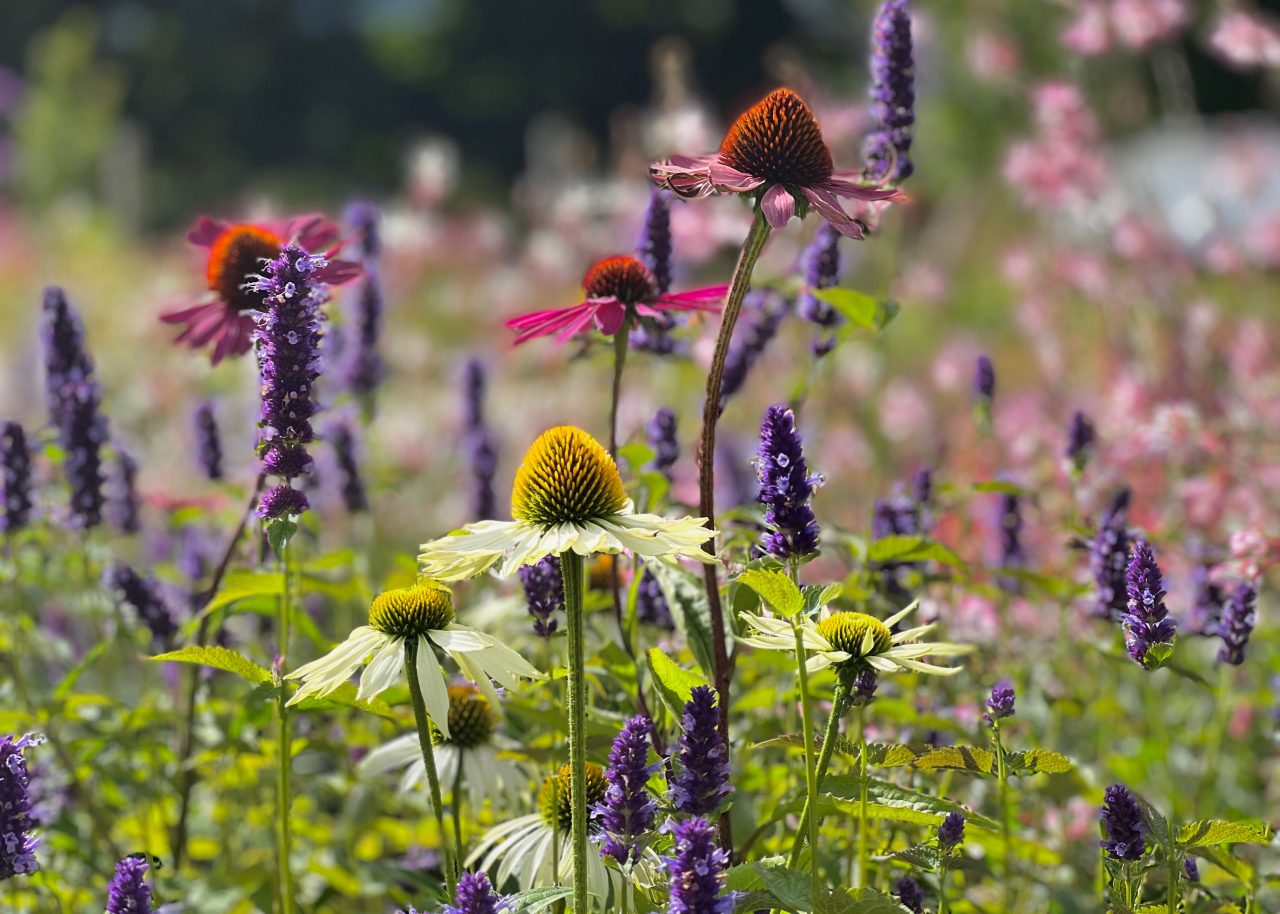
Agastache Korean Zest, Echinacea
Asters and grasses, again. These are plants which reach their peak at this time of year and will continue looking good as the grasses colour up and the flowers fade. They also make an excellent backdrop for the seed heads of spent plants. As Agastaches and Echinaceas finish, their seed heads start to burnish and the foliage might take on red and yellow tones. Yet far from looking tired this perfectly compliments the the blues of Asters and the green grasses eventually themselves taking on golden colours.
Rudbeckia, Verbena, and the later flowering Sanguisorbas are a lovely combination and again will look good individually or together even once the flowers are past their best. Combined with a textural backdrop of repeated grasses this will look like an effortless combination for years to come with minimal effort up front.
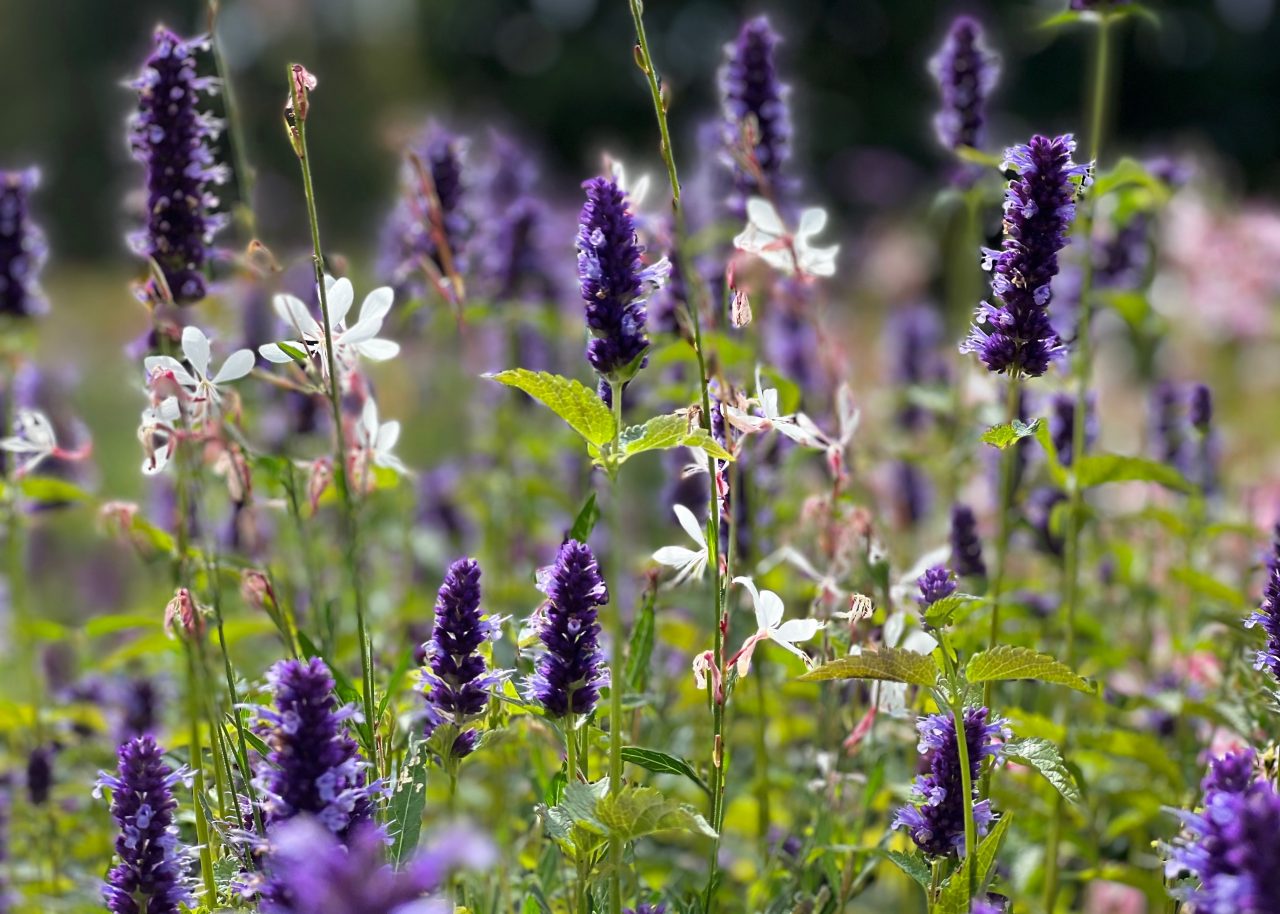
Gaura lindheimeri Cool Breeze, Agastache Korean Zest
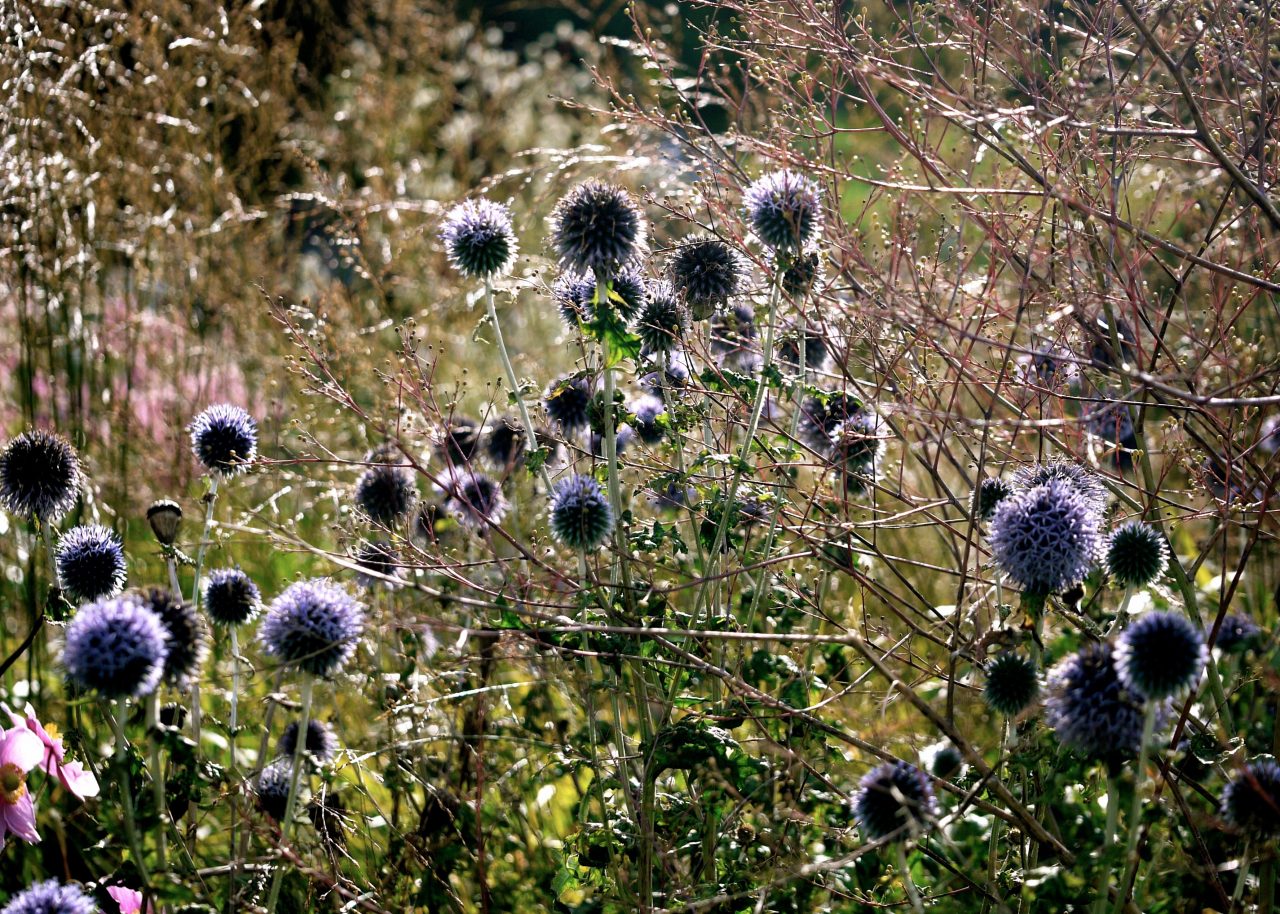
Echinops Blue Globe, Crambe cordifolia
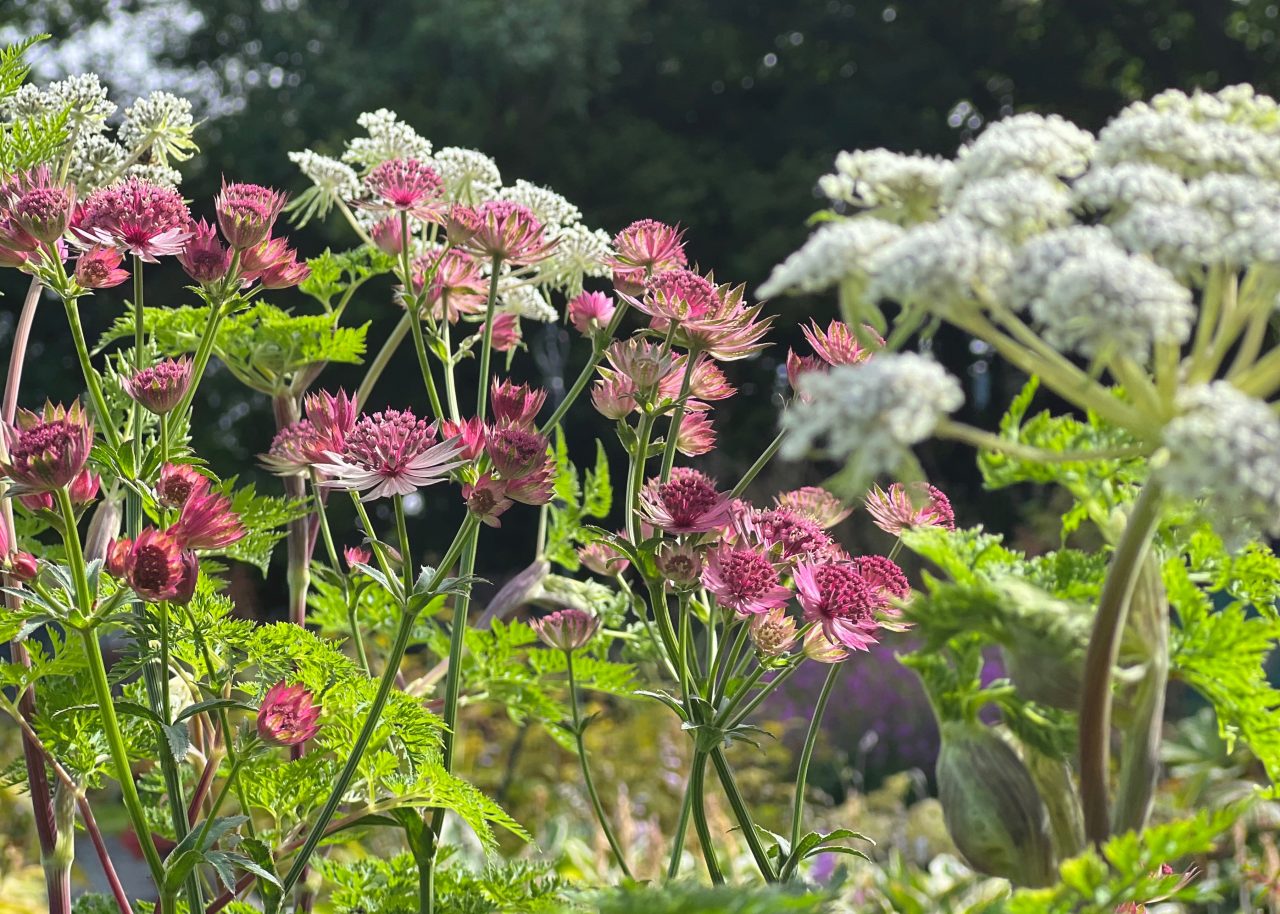
Astrantia Roma, Selinum wallichiana
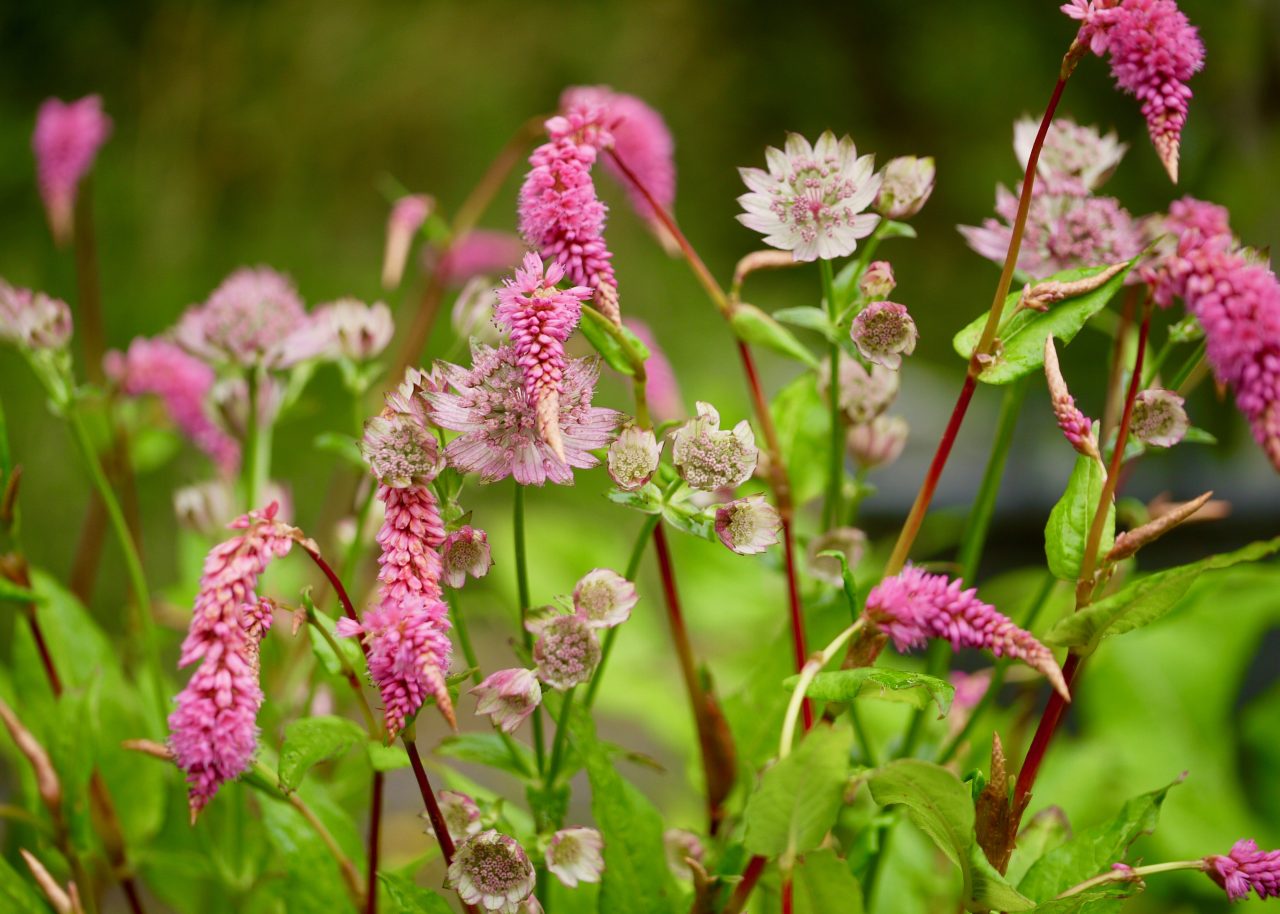
Astrantia, Persicaria amplexicaulis var. pendula
As you move into slightly shadier corners, fresh late-season plants like Selinum wallichianum can mingle with still-flowering Geraniums and rise up from the foliage of finished Astrantias and Campanula.
Deeper into the shade combinations are easy as the green foliage of spring flowering woodlanders mixes beautifully to create a sea of texture late into the season and can be augmented with late-flowering shade-friendly plants like Actaea and Tricyrtis.
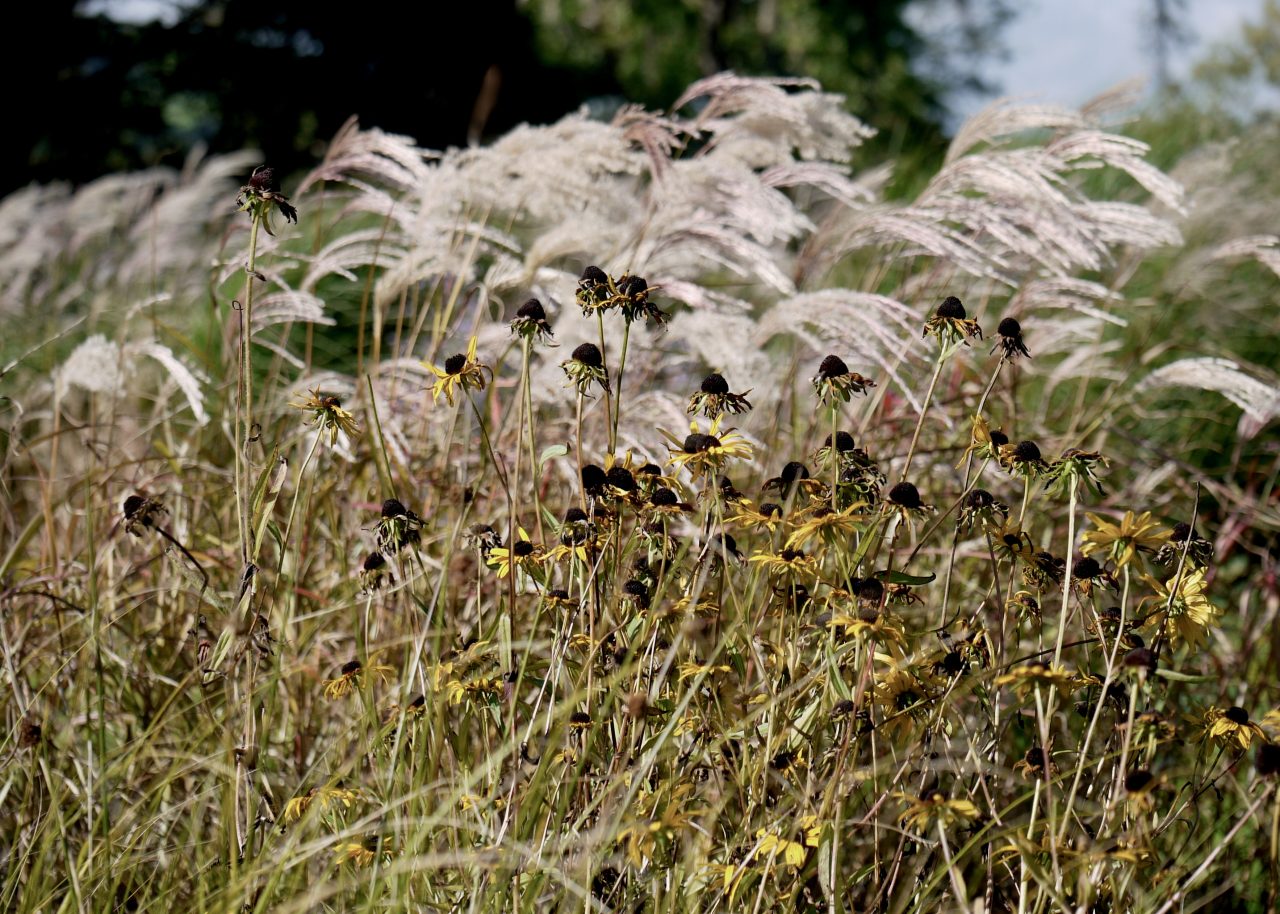
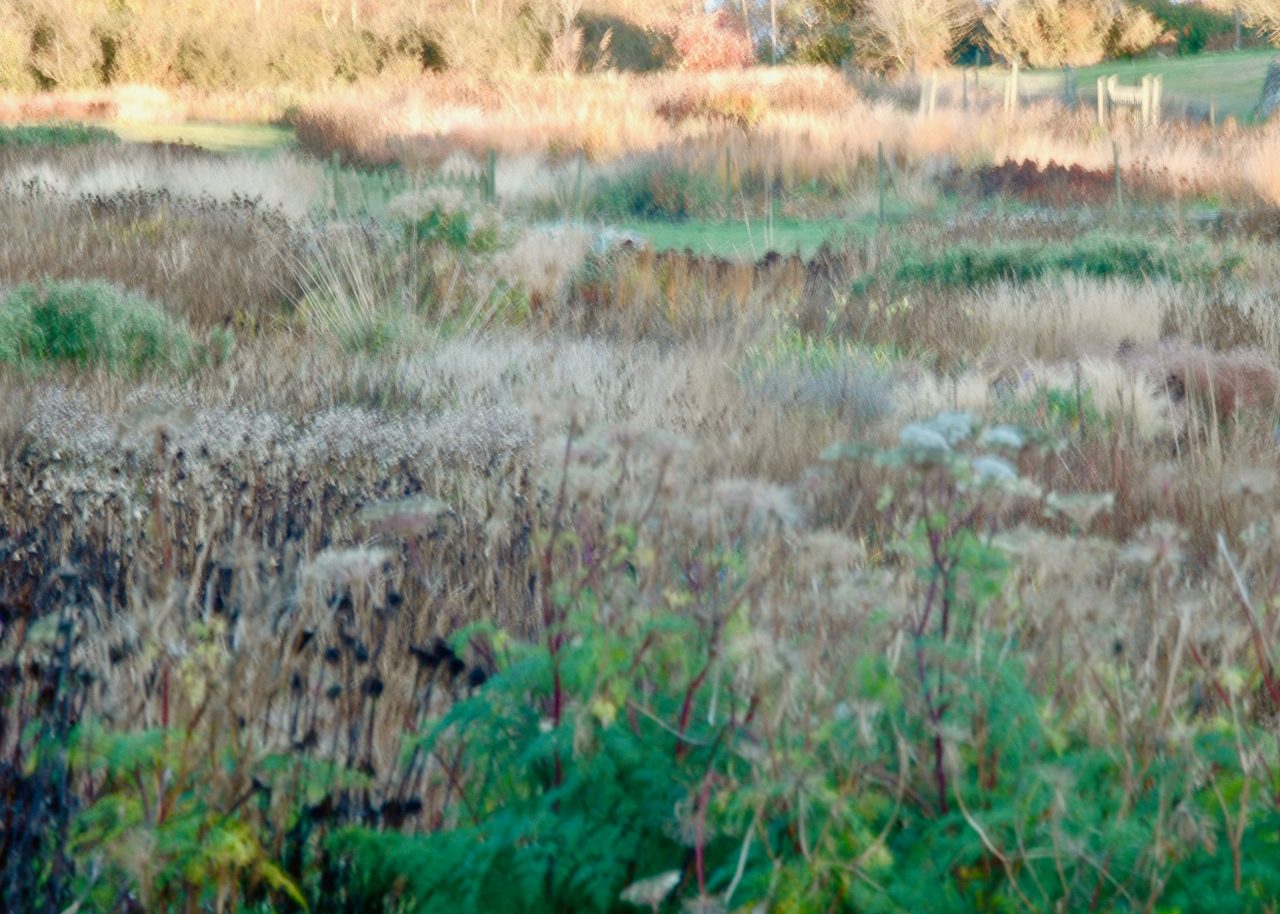
We’re often asked about winter bedding, which we don’t do, but the intention is continued interest into winter, which we very much do. It is simply that we seek to achieve this interest with hardy perennials which will be both seasonal and structural right through winter. These have the added advantage of coming back again every year without the waste of bedding. Far from having nothing to look at in the gardening off-season, the plants that look good now will still look do – albeit different – in winter. Combinations of early and late-season flowers, at irregular intervals will give your garden a simple natural looking effect, and can be achieved with just a few plants, repeated.
